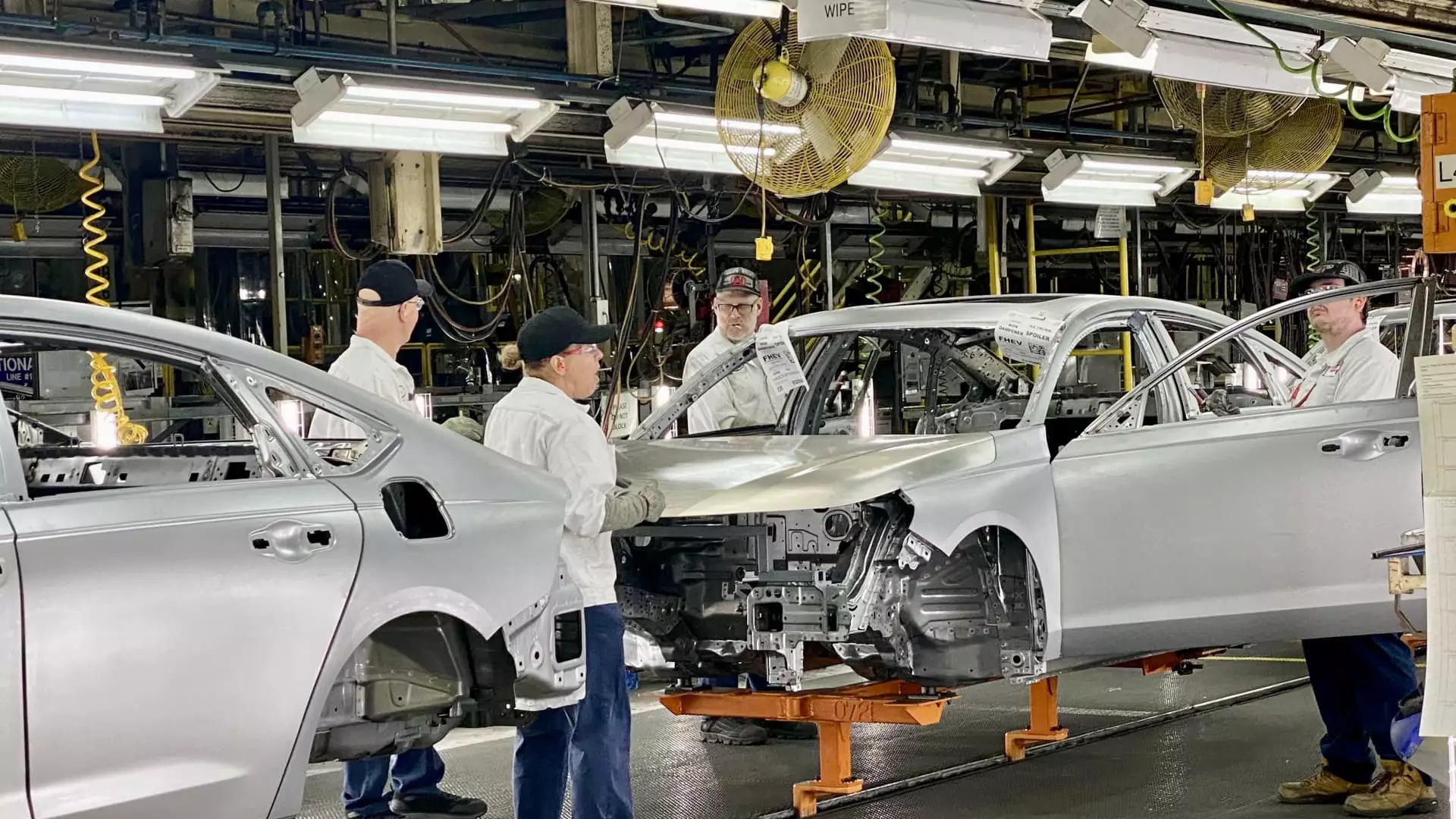Honda Motor Co., a storied Japanese automaker with a legacy spanning 75 years, is making significant alterations to its manufacturing strategy, with an unexpected focus on Ohio. The company has amplified its investment plans from an initial $700 million to over $1 billion, signaling a commitment to establishing a robust electric vehicle (EV) production landscape in the United States.
This strategic pivot not only reflects the auto industry’s broader transition towards electrification but also illustrates Honda’s intent to assert its presence as a leader in the EV market. The technological upgrades, including cutting-edge “giga presses,” represent a shift towards innovative manufacturing methods that could redefine production efficiency and sustainability.
At the core of Honda’s $1 billion investment is the installation of six large-scale giga presses, famous for their use in Tesla’s operations. These mammoth machines represent a significant technological leap, allowing Honda to streamline manufacturing by casting multiple parts in a single process. This not only reduces cost but also enhances the structural integrity of the final products.
In addition to these presses, Honda is spearheading the development of a new “cell” manufacturing system, specifically designed for constructing battery cases for its upcoming electric models. This facility, alongside a substantial $3.5 billion investment in a dedicated battery plant, is positioned to be the cornerstone of Honda’s global manufacturing strategy for electric vehicles.
Honda’s Marysville Auto Plant is undergoing transformation to accommodate a variety of vehicles on a single assembly line. This includes conventional gas-powered vehicles, hybrids, and electric cars, which fundamentally challenges the traditional automobile manufacturing model. Such diversity in production capabilities allows Honda to respond better to market demands and consumer preferences in real-time.
Mike Fischer, the North American lead for Honda’s battery-electric vehicle projects, emphasized that this operation will set “the global standard for EV production,” showcasing a deep commitment to integrating advanced technologies and sustainable processes in manufacturing.
The manufacturing shift to Ohio comes amid increased pressures to onshore production and reduce reliance on foreign facilities. Initially announced during the Biden administration’s industrial revitalization efforts, these investments are crucial, particularly considering the geopolitical uncertainties that led to trade threats from the former administration. With increasing tariffs possibly affecting imported autos, Honda’s strategy to fortify its domestic manufacturing gives it a strategic advantage.
The establishment of this EV hub in Ohio is a significant pivot for Honda, which has historically rolled out innovations from Japan before expanding them internationally. It’s a departure from protocol that underscores the urgency of the current landscape where competition in the EV sector is fierce and burgeoning.
As Honda prepares to ignite its EV lineup, the forthcoming Acura RSX crossover signifies a new chapter as the company’s first electric vehicle produced in-house. Furthermore, the introduction of the Honda Prologue and Acura ZDX, which are currently manufactured in Mexico, highlights Honda’s desire to consolidate production and ensure that future models are conceived and produced within the U.S.
The electric future doesn’t halt at crossovers; Honda has ambitious plans for a full assortment of EVs, evidenced by the recent unveiling of prototypes like the Honda 0 SUV. Each step emphasizes Honda’s commitment to not just catching up but asserting dominance in a transitioning automotive landscape.
Honda’s transition to electric vehicles is interwoven with an overarching commitment to sustainability. The automaker has declared long-term goals such as achieving carbon neutrality and eliminating waste—a vision reflected in its investment in recyclable battery materials and innovative manufacturing processes.
As Bob Schwyn, senior vice president of Honda Development and Manufacturing of America, noted, this evolution represents a “second founding” for Honda, where the emphasis is placed not only on profits but also environmental responsibility. This shift to sustainable practices comes as many competitors falter on similar commitments, suggesting Honda is poised to take the lead in both market share and environmental stewardship.
Honda is embarking on a transformative journey that challenges conventional manufacturing norms and embraces the EV revolution with arms wide open. With substantial investments in advanced technology, a diversified production strategy, and a steadfast commitment to sustainability, Honda’s maneuvering in Ohio reveals its determination not simply to survive but to thrive amidst the rapidly changing automotive landscape. This proactive approach might just be what the company needs to carve its future as a prominent player in the electric vehicle market.

